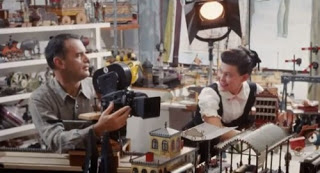Oddball Films Media
•
May 24, 2013
Image
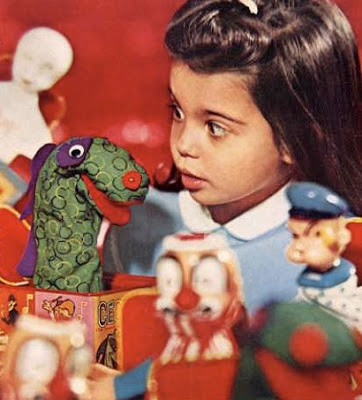
Oddball Films presentsPlay with your Toys! a fun, freewheeling program of vintage short films celebrating toys. Marvel at the childlike wonder instilled in artist Alexander Calder as he plays with his kinetic sculptures in Calder’s Circus (1963). Charles and Ray Eames were huge miniature and toy enthusiasts and offer up two visually stunning shorts, Tops (1969), a brilliant childlike anthropological film capturing spinning tops from different cultures and eras and Toccata For Toy Trains (1957) a marvelous celebration of antique toys. Grant Munro's Toys (1966) brings to life your GI Joes, but as it turns out, that's not a good thing. Everyone's favorite little green buddy, Gumby gets into shenanigans with toy trucks in the original 1957 short Toy Fun. A little girl's creepy dolls come to life in A Christmas Dream (1954). Watch a toy truck from the factory to the classroom in the gorgeous Technicolor funucational short Toy Telephone Truck (1953). Dolls aren't just for girls and Free To Be You and Me (1974) wants you to know it with the song "William Wants a Doll". Learn to share your toys or be alone with the animated social conditioning primer Most Important Person - Share it with Someone (1972). Plus! Naughty exxxcerpts from stuffed-animal smut and burlesque, vintage toy commercials and even more surprises!
Venue: Oddball Films, 275 Capp Street, San Francisco
Featuring:
Toccata for Toy Trains (1957, color)
Legends of the design world, Charles and Ray Eames had their own way of looking at everything and this table-top epic shows it. The best cinema craft was adapted to make this miniature world of trains, dolls and other tiny treasures completely alive. Leave it to the Eames to put viewers inside a toy train! Scored by renowned composer Elmer “Magnificent Seven” Bernstein.
Image

Toys occupy several of the Eames films, including Tops, a purely visual film that documents the short life span of a spinning top. It’s essentially a silent anthropological film and captures tops from different cultures and eras. The Eames Office contained a menagerie of toys, and it was Charles who once asked rhetorically, “Who would say that pleasure is not useful?” Tops was shot from the extreme perspectives of close-ups – an expressionistic technique that lets the audience experience toys as if from the eyes of a child. Whether set into motion by the twist of the fingers or the pull of a string, these colorful tops are even more beautiful seen through the eyes of Charles and Ray Eames. The stunning variety of the tops featured here is almost as dizzying as the whirling toys themselves. Composer Elmer Bernstein, a frequent Eames collaborator, spins the musical spell.
Image
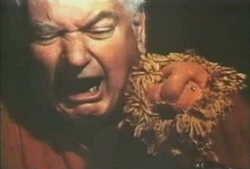
Before his rise to fame as the artist to popularize the mobile, kinetic sculptor Alexander Calder created a miniature moving circus out of wire, wood and cloth. In 1963, filmmaker Carlos Vilardebo filmed the icon performing his circus. As Calder exhibits the piece, we watch as Calder blurs the line between presentation and play. This remarkable circus comes to life, sometimes on it’s own, sometimes in conjunction with other elements and always in an astonishing manner.
Image
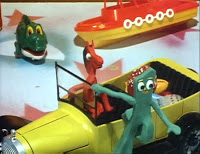
Everybody’s favorite little green shape shifter, Gumby and his B.F.F. Pokey go on a number of fantastical and charming adventures in these rare original shorts by Claymation Master, Art Clokey.
A Birthday for Buttons(Color, 1980s)
The toy Button really wants to have a birthday party but he has no idea how old he is. His toy friends want to help him out but seems confuse him more. Could Button’s dream come true?
Toys (Color, 1966)
Image
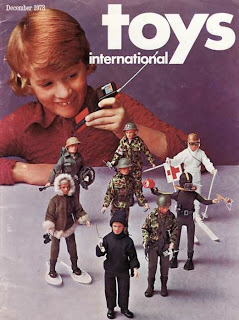
TV Toy+Game Commercials (1960s)
We’re still unearthing more over-the-top tv ads featuring our favorite plastic gal-pal B@rbie, Milton Bradley games like “Operation”, “Twister” “Socketheads”, “Body Language”, “FBI” and many more!
A Christmas Dream (B+W, 1954)
Little girl goes to sleep on Christmas Eve and her toys come to life. Cool/creepy stop motion animation of her favorite rag doll gives this more of Christmas Nightmare effect.
Directed and created by a team of two Czech Brothers, Borivoj Zeman and Karel Zeman. Karel Zeman became the director of feature-length movies including "The Fabulous World of Jule s VErene and Baron Munchausen” while his brother directed titles such as "The Phantom of Morrisville" and "The Young Lady from the Riverside"
A Christmas Dream (B+W, 1954)
Little girl goes to sleep on Christmas Eve and her toys come to life. Cool/creepy stop motion animation of her favorite rag doll gives this more of Christmas Nightmare effect.
Directed and created by a team of two Czech Brothers, Borivoj Zeman and Karel Zeman. Karel Zeman became the director of feature-length movies including "The Fabulous World of Jule s VErene and Baron Munchausen” while his brother directed titles such as "The Phantom of Morrisville" and "The Young Lady from the Riverside"
Double-Talk Girl (1942), A Universal Pictures “Popular Person Oddity” with Shirley Dinsdale and her right-hand gal, Judy Splinters.
Image
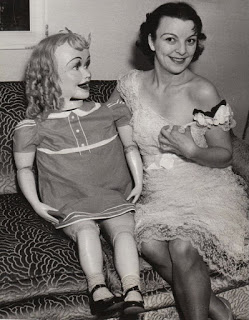
Plus!
Doll Dance, a 1930s Burlesque tit for tat dance number with Arlene and Rene. Both ladies are lovely, only Arlene has someone pulling her strings. Decades before the rise of “furry” culture, Beaver Boy (1968) is the touching story of a young man, reading quietly by himself, who is propositioned by a fox puppet, a proposition too good to pass up.
For the Early Birds!
Santa and the Fairy Snow Queen
The Fairy Snow Queen gives a sort of dreadful life to Santa’s dolls on Christmas eve. Jack-in-the-box, toy soldiers, musical doll, and other dolls dance and sing for Santa to the music of The Nutcracker Suite and Sleeping Beauty. Snoopy the Brownie (Whaa?) tells us he visits toys every night to see if they’re being well treated by the children who own them. Don’t miss the gay uniformed “ toy soldier” and the creepy over-the-top human Jack-in-the box! Proof that Sid Davis - father of the cautionary mental hygiene film- really was the king of childrens nightmares.
The Fairy Snow Queen gives a sort of dreadful life to Santa’s dolls on Christmas eve. Jack-in-the-box, toy soldiers, musical doll, and other dolls dance and sing for Santa to the music of The Nutcracker Suite and Sleeping Beauty. Snoopy the Brownie (Whaa?) tells us he visits toys every night to see if they’re being well treated by the children who own them. Don’t miss the gay uniformed “ toy soldier” and the creepy over-the-top human Jack-in-the box! Proof that Sid Davis - father of the cautionary mental hygiene film- really was the king of childrens nightmares.



